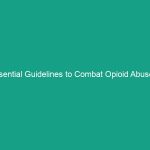Good Morning Team!
Today, we are going to discuss an essential topic that affects all of us in the workplace: “One Safeguard Doesn’t Make it Safe: Essential HSE Tips to Protect You.” Safety is not just a set of rules we follow; it’s a culture we must embrace. Understanding the importance of multiple Safety Measures and protocols can significantly reduce risks and ensure a healthier work Environment for everyone.
Understanding “One Safeguard Doesn’t Make it Safe”
The phrase “One Safeguard Doesn’t Make it Safe” emphasizes that relying on a single Safety measure is not enough to protect us from workplace Hazards. This concept is crucial in the Health, Safety, and Environment (HSE) domain, where multiple layers of Safety protocols must be implemented for effective risk management.
In our daily operations, we may encounter Hazards that require a combination of safeguards—personal protective equipment (PPE), safety Training, equipment inspections, and emergency preparedness plans. Understanding and implementing these layers of safety not only protects us but also fosters a culture of safety within our team.
Many employees mistakenly believe that wearing PPE alone is sufficient for safety. However, without proper training, adherence to safety protocols, and awareness of potential hazards, even the best PPE cannot guarantee safety. Recognizing this misconception is the first step toward creating a safer workplace.
Key Hazards, Risks, and Safety Considerations
Identifying hazards in the workplace is the first step to minimizing risks. Here are some common hazards that may require multiple safeguards:
- Slips, Trips, and Falls: These are among the most common workplace accidents. Proper footwear, clear walkways, and training on Safe Practices can help mitigate these risks.
- Chemical Exposure: Working with hazardous substances necessitates not only PPE but also proper labeling, safety data sheets, and training on handling Procedures.
- Machine Safety: Operating machinery without proper safeguards can lead to severe injuries. Regular Maintenance, safety guards, and machine Operation training are essential.
- Ergonomic Risks: Poor workstation setup can lead to musculoskeletal disorders. Ergonomic assessments, proper training, and regular breaks can reduce these risks.
Ignoring safety protocols can lead to severe consequences, including injuries, financial loss, and even fatalities. It’s crucial to recognize that safety is a shared responsibility—everyone plays a role in maintaining a safe work environment.
Best Practices, Procedures, & Actionable Advice
Implementing effective Safety Measures requires clear procedures and practices. Here are some Best Practices to consider:
1. Use Multiple Layers of Safety
Always apply multiple safety measures for each hazard. For example:
- For chemical handling, use appropriate PPE, ensure proper ventilation, and have spill kits readily available.
- For working at heights, use harnesses, guardrails, and ensure Ladder Safety training.
2. Conduct Regular Safety Training
Training is vital for ensuring that all team members understand the risks and how to mitigate them. Regular refresher courses can help reinforce safety protocols.
3. Perform Safety Audits and Inspections
Regular inspections of the workplace can identify potential hazards before they cause harm. Document your findings and take immediate action to address any issues.
4. Encourage Reporting of Unsafe Conditions
Foster an environment where employees feel comfortable reporting unsafe conditions or practices without fear of retaliation. This can help identify issues early and improve overall safety.
5. Review and Improve Safety Protocols
Continuously evaluate the effectiveness of your safety measures. Stay updated with industry Standards and Regulations, and make changes as necessary to improve safety protocols.
Regulations, Standards, and Compliance
Understanding the safety regulations that govern our work environment is crucial. Compliance with standards set by organizations like OSHA (Occupational Safety and Health Administration) or ISO (International Organization for Standardization) not only protects employees but also enhances the organization’s credibility.
Non-compliance can lead to fines, legal issues, and a tarnished reputation. It’s essential to stay informed about relevant regulations and ensure that all team members are trained in compliance practices.
Employee Engagement & Discussion
Now that we’ve covered the fundamentals, let’s engage in a discussion. Here are some questions to consider:
- What safety challenges have you encountered related to our current protocols?
- Can you think of a time when a single safeguard was not enough? How could multiple safeguards have changed the outcome?
- What additional training or resources would you find helpful to enhance safety in your role?
Your feedback is invaluable in promoting a safe workplace culture. Let’s work together to share ideas and solutions that can improve our safety practices.
Conclusion & Key Takeaways
As we wrap up today’s Toolbox Talk, let’s remember the key points:
- One safeguard isn’t enough; multiple layers of safety are essential.
- Regular training and open communication are vital for effective safety practices.
- Compliance with safety regulations protects everyone and prevents serious consequences.
Prioritizing safety is a collective effort that requires commitment from all of us. Thank you for your attention and for being dedicated to creating a safer work environment. Let’s continue to prioritize safety every day!


